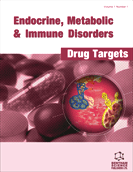Abstract
Vitamin A is essential for development and differentiation of multiple tissues. Its derivatives, the retinoids, are potent drugs used to treat and prevent a variety of diseases. Retinoid effects are mediated by retinoic acid receptors (RARs) and retinoid X receptors (RXRs). There are three known RARs (α, β, and γ), and multiple isoforms of each receptor exist. Many of the therapeutic effects of retinoids including cancer chemoprevention and treatment of dermatologic disorders are mediated through RARβ. In humans, five isoforms of this gene have been described. Specific isoforms of RARβ exert distinct and sometimes opposing functions by altering patterns of target gene induction. Functional isoforms that activate distinct cassettes of target genes with differing biologic consequences include RARβ1 and RARβ2. Dominant negative isoforms of this gene that inhibit target gene activation include RARβ4 and RARβ5. RARβ1 is poorly understood although this may function as an oncogene in certain cancers. Chromatin modifying drugs have been shown to trigger isoform-specific changes in the RARβ gene. This review focuses on the structure and function of RARβ isoforms as well as recent work in the epigenetic targeting of specific RARβ isoforms. Discerning isoform-specific functions will be critical for exploiting the full potential of retinoid-based therapy including rational approaches to combining retinoids with chromatin modifying drugs.
Keywords: Retinoids, retinoic acid receptor beta, cancer, epigenetics
Endocrine, Metabolic & Immune Disorders - Drug Targets
Title: Distinct Functions of Retinoic Acid Receptor Beta Isoforms: Implications for Targeted Therapy
Volume: 8 Issue: 1
Author(s): Catherine B. Swift, John L. Hays and W. Jeffrey Petty
Affiliation:
Keywords: Retinoids, retinoic acid receptor beta, cancer, epigenetics
Abstract: Vitamin A is essential for development and differentiation of multiple tissues. Its derivatives, the retinoids, are potent drugs used to treat and prevent a variety of diseases. Retinoid effects are mediated by retinoic acid receptors (RARs) and retinoid X receptors (RXRs). There are three known RARs (α, β, and γ), and multiple isoforms of each receptor exist. Many of the therapeutic effects of retinoids including cancer chemoprevention and treatment of dermatologic disorders are mediated through RARβ. In humans, five isoforms of this gene have been described. Specific isoforms of RARβ exert distinct and sometimes opposing functions by altering patterns of target gene induction. Functional isoforms that activate distinct cassettes of target genes with differing biologic consequences include RARβ1 and RARβ2. Dominant negative isoforms of this gene that inhibit target gene activation include RARβ4 and RARβ5. RARβ1 is poorly understood although this may function as an oncogene in certain cancers. Chromatin modifying drugs have been shown to trigger isoform-specific changes in the RARβ gene. This review focuses on the structure and function of RARβ isoforms as well as recent work in the epigenetic targeting of specific RARβ isoforms. Discerning isoform-specific functions will be critical for exploiting the full potential of retinoid-based therapy including rational approaches to combining retinoids with chromatin modifying drugs.
Export Options
About this article
Cite this article as:
Swift B. Catherine, Hays L. John and Petty Jeffrey W., Distinct Functions of Retinoic Acid Receptor Beta Isoforms: Implications for Targeted Therapy, Endocrine, Metabolic & Immune Disorders - Drug Targets 2008; 8 (1) . https://dx.doi.org/10.2174/187153008783928389
| DOI https://dx.doi.org/10.2174/187153008783928389 |
Print ISSN 1871-5303 |
| Publisher Name Bentham Science Publisher |
Online ISSN 2212-3873 |
 51
51
- Author Guidelines
- Bentham Author Support Services (BASS)
- Graphical Abstracts
- Fabricating and Stating False Information
- Research Misconduct
- Post Publication Discussions and Corrections
- Publishing Ethics and Rectitude
- Increase Visibility of Your Article
- Archiving Policies
- Peer Review Workflow
- Order Your Article Before Print
- Promote Your Article
- Manuscript Transfer Facility
- Editorial Policies
- Allegations from Whistleblowers
- Announcements
Related Articles
-
Interaction of Drug or Food with Drug Transporters in Intestine and Liver
Current Drug Metabolism Biologics: An Update and Challenge of Their Pharmacokinetics
Current Drug Metabolism The Effect of Drugs on the Labeling of Blood Elements with Technetium-99m
Current Pharmaceutical Design Ethnopharmacological and Phytopharmaceutical Evaluation of Prosopis cineraria: An Overview and Future Prospects
Current Drug Metabolism Editorial (Thematic issue: Discovering New Anticancer Activities from Old Drugs)
Current Medicinal Chemistry Melittin: A Natural Peptide with Expanded Therapeutic Applications
The Natural Products Journal An Update on Extemporaneous Preparation of Radiopharmaceuticals Using Freeze-Dried Cold Kits
Mini-Reviews in Medicinal Chemistry Combination of Histone Deacetylase Inhibitor with Cu(II) 5,5-diethylbarbiturate Complex Induces Apoptosis in Breast Cancer Stem Cells: A Promising Novel Approach
Anti-Cancer Agents in Medicinal Chemistry Neuroinflammation and Immunity: A New Pharmacological Target in Depression
CNS & Neurological Disorders - Drug Targets Wnt Signaling in Rhabdomyosarcoma – A Potential Targeted Therapy Option
Current Drug Targets ‘Treat to Target’ in Mild to Moderate Ulcerative Colitis: Evidence to Support this Strategy
Current Drug Targets Role of Serum and Glucocorticoid-Inducible Kinase (SGK)-1 in Senescence: A Novel Molecular Target Against Age-Related Diseases
Current Medicinal Chemistry Anti-Oxidative Stress and Beyond: Multiple Functions of the Protein Glutathionylation
Protein & Peptide Letters Meet Our Editorial Board Member
Current Protein & Peptide Science Mitochondria: A Promising Target for Anticancer Alkaloids
Current Topics in Medicinal Chemistry Niosomal Gel for Site-Specific Sustained Delivery of Anti-Arthritic Drug: In Vitro-In Vivo Evaluation
Current Drug Delivery Targeting the JAK/STAT Signaling Pathway for Breast Cancer
Current Medicinal Chemistry Synthesis, Molecular Docking Study, and Cytotoxic Activity of 3,4-diaryl-5-(4-pyridinyl)-1,2,4-oxadiazole
Medicinal Chemistry Editorial [Hot topic: Membrane Estrogen Receptors (Guest Editor: Paul J. Davis)]
Immunology, Endocrine & Metabolic Agents in Medicinal Chemistry (Discontinued) Arsenic Trioxide Exerts Anti-lung Cancer Activity by Inhibiting Angiogenesis
Current Cancer Drug Targets


























